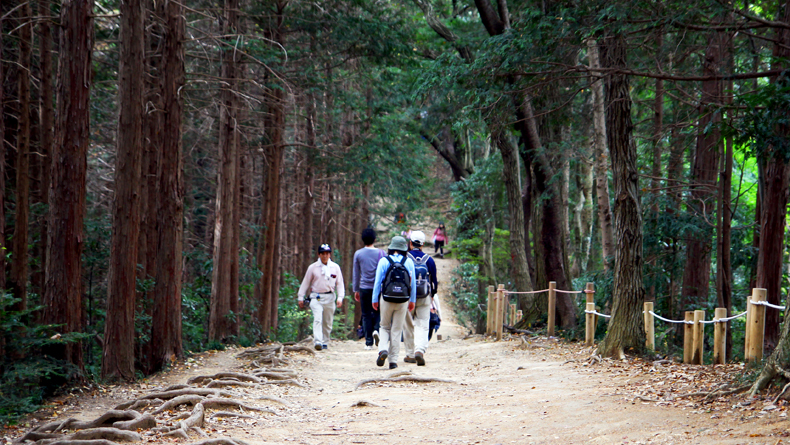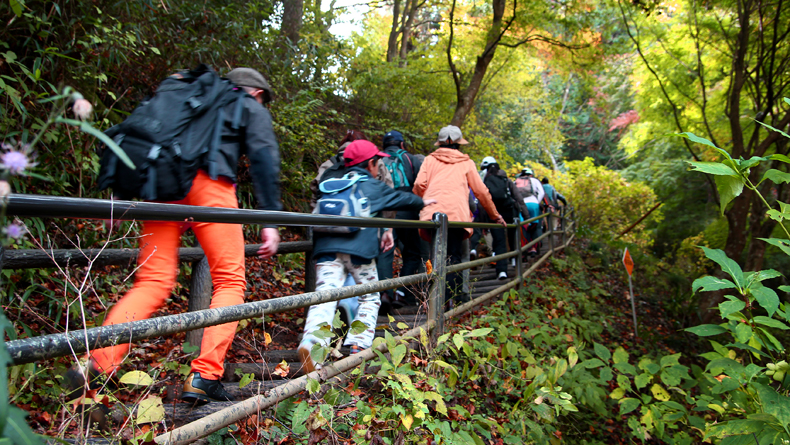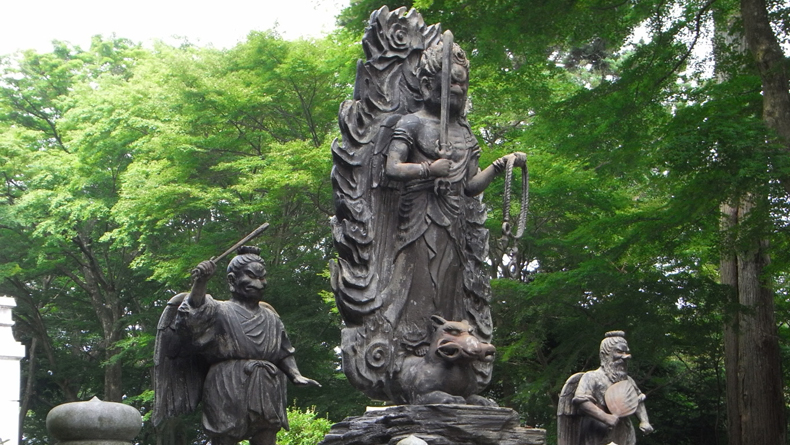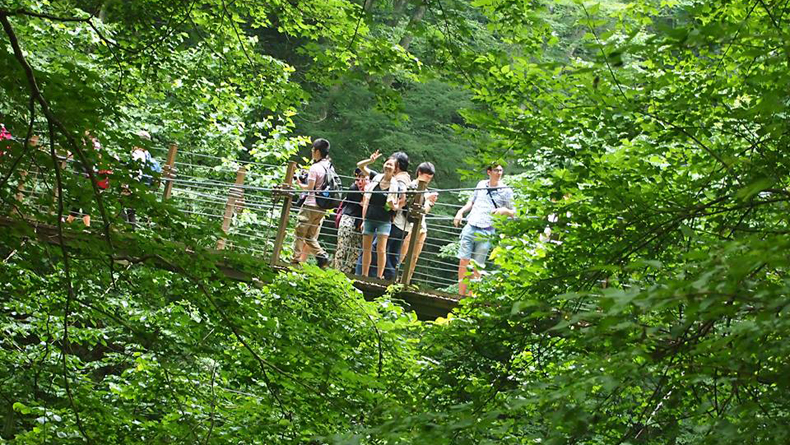Mt. Takao: The Closest Getaway From The Grind
After one too many naps on the train commute, sometimes it's nice to take a breather, get out of the city, and visit a place to rejuvenate both your mind and body: Mt. Takao.
Ask any Tokyo dweller where one can take a break from the hustle and bustle, and they’ll most likely recommend this popular getaway, located in Hachioji, west of downtown Tokyo. Revered for its sacred importance, diverse wildlife, and nature sightseeing, this mountain stands at a height of 599 meters and is a popular destination for tourists, Tokyo locals, and spiritual ascenders alike. At the top stands Yakuoin Temple, a well known spiritual destination for those who suffer from inner ailments, as the temple is devoted to the Yakushi Nyorai (Medicine Buddha) and the Karasu-tengu and Daitengu (gods of forest protection). Even if you aren’t familiar with spiritual incentives, mountain hiking is one of the healthiest ways to make a change of scene if you’re tired of breathing the same polluted air day in and day out, and if you’re not up for dedicating an entire weekend to the more popular but incredibly challenging Mt. Fuji endeavour, then Mt. Takao is the best bet, especially if the kids want to join.
An hour’s train ride from Shinjuku Station and only ¥370 from my wallet got me right to Takaosanguchi Station, which is regarded as the starting point of the Mt. Takao trek. I went with my pal Masa, who runs an English-Japanese language exchange club, so our group consisted of two other native Japanese from his organization—what better way to multi-task than to take a wellness holiday and be productive with some Japanese conversation practice?
Picking a Saturday to make the trip was not very well planned, since I later discovered that compared to the weekdays, one can expect the trails can be packed full with hikers on the weekends. However, we were pretty lucky since for the most part, the crowds were thin enough to move at a continuing pace. Hikers can choose from eight trails to navigate around Mt. Takao, as well as a cable car and a scenic lift for those who want to take it easy. My group’s choice for ascension to Yakuoin Temple was Trial 1, or Omotesando Trail, as it is the most popular way get immersed in Mt. Takao’s many other attractions.
At the beginning of the hike, everyone was in great spirits, the brilliantly green and lush foliage of the trees looming above us a refreshing sight compared to the concrete jungle back home. There was a reason to stop and snap a photo every ten minutes or so, whether it was of a roadside hokora (small Shinto shrine) tucked picturesquely on a slope, a waterfall-like tangle of tree roots spilling out onto the trail, or paved stairs high enough to convince anyone it was worth the climb. Yet after an hour in, we couldn’t be bothered to take pictures. The amount of sweat I was producing could have filled a water bottle or two; it was ridiculously humid to the point where I stopped trying to be a good tourist and only focused on thinking of anything besides the word “atsui” (hot). Bathroom stops were made mostly to rinse the towel that was wrapped around my neck in cool water. Around two hours from Takaosanguchi Station, as the salt was starting to solidify on our skin, we were at the top and ready to try the locally popular lunch of fresh tororo (grated yam) soba. It was perfect with a cold bottle of Ramune soda under the open sky and forest canopy.
Descending the mountain was a breeze. This time, we made our way through the Trail 2 loop to visit Monkey Park and the Wild Plant Garden, as well as crossing the suspension bridge at Trail 4. Although many websites recommend making the monkey zoo and garden pitstop, I recommend saving your ¥400 and skipping it. Although the monkey babies were cute, the rest looked utterly bored to the point where I felt despondent just looking at them. The garden was more like a thin loop that supposedly features a variety of plant life, but all I saw were the plant labels—perhaps we just missed the season, but I left with the sense that I had been ripped off.
Mt. Takao is convenient and easy enough holiday trip, but if you want to get deeper into the cultural experience it offers, try the Shojin-Ryori specialty, a vegetarian cuisine eaten as part of Buddhist priest training. Taking Trail 6 also allows visitors to watch or participate with Buddhist priests practicing “waterfall asceticism,” or meditation under the Ja-Taki and Biwa-Taki waterfalls, although prior reservations and preparation is needed. If you wait until March, you can watch revelers take their prayers to the extreme at the annual fire-walking festivities of the Hiwatari Matsuri. Mt. Takao is also a popular spot to view the autumn leaves.
For even more hardcore trekkers, read about climbing Japan’s very majestic—and tallest—peak, Mt. Fuji, here.
The Deets
Getting there: Take the semi-express train via the Keio Line from Shinjuku Station to Takaosanguchi Station. The ride will take approximately 50 minutes and will cost ¥370 each way.
Eats: Beer Mount: Walk up Trail 1 or take a six-minute cable car ride from Kyotaki Station for an all-you-can-eat-and-drink hiking party. Opening hours vary by day, so make sure to check for official details here. Buddhist vegetarian cuisine: Make a reservation to dine like the Buddhist priests by calling 042-661-1115, but if you can’t speak Japanese, you’ll need a translator friend’s assistance.
Participate: Details on how to participate in religious practices involving the waterfall meditation and fire-walking can be found here.
Text by Yulia Mizushima. Photos by Azlan DuPree, Masao Mutoh and Masa Marume.















